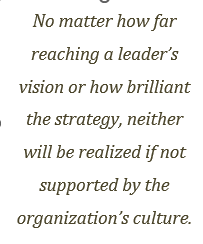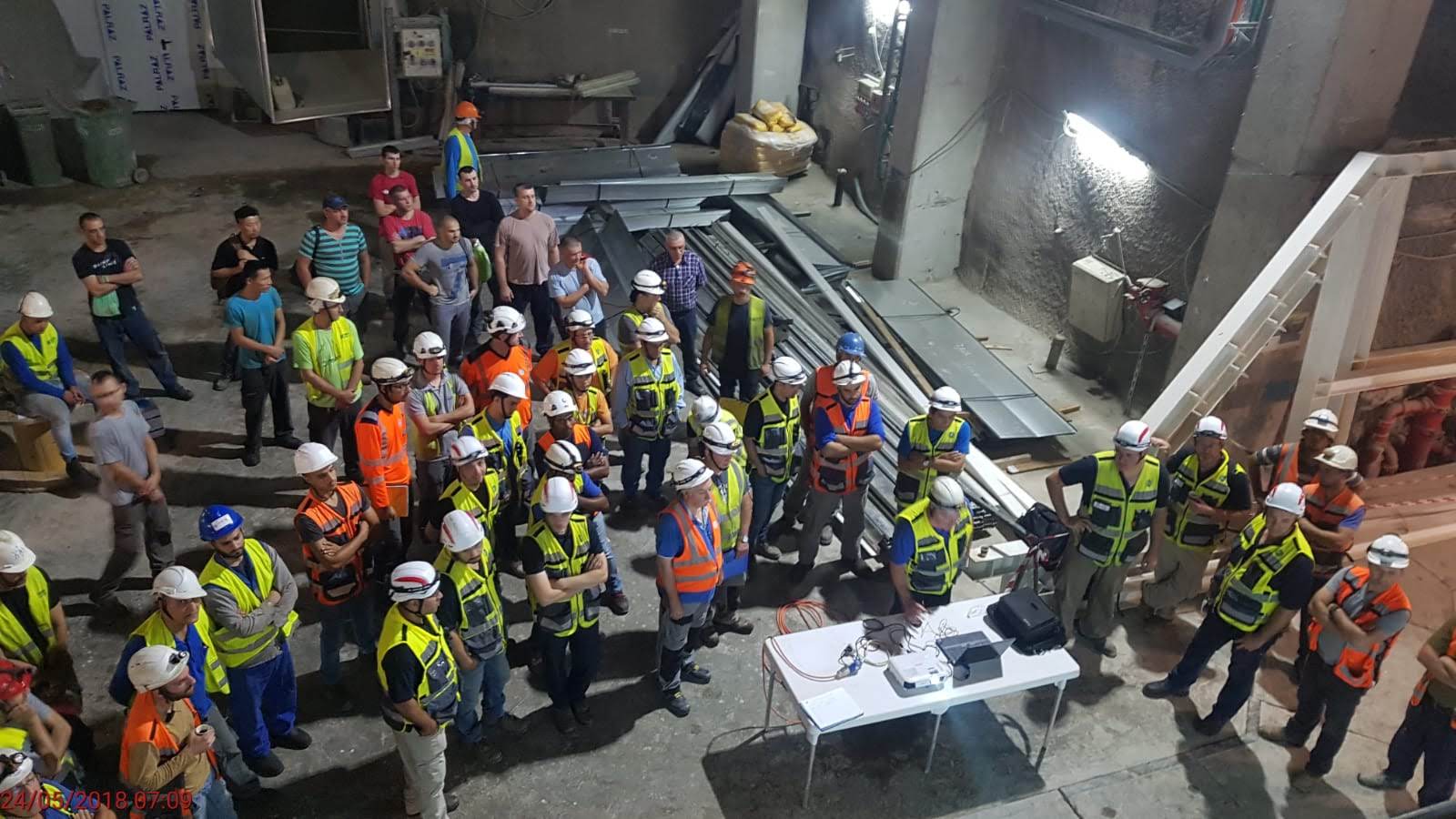תרבות בטיחות כוללת – המפעל כארגון לומד- Comprehensive safety culture - the factory as a learning organization

בטיחות קודמת לכל – הפכה בשנים האחרונות לסיסמא השגורה במפעלים אולם אינה מהווה ערך שיש לדבוק בו יום יום. הבטיחות במפעלים "מתורגמת" למעשה לביצוע הדרכות בהתאם להנחיות ובעבודתו של ממונה הבטיחות, אך לא מוטמעת בכלל ערוצי הפעילות באופן דינאמי ואיכותי שבבסיסה האמונה שלכל עובד האחריות לבטיחותו האישית והיא איננה ניתנת להעברה או לחלוקה. היא אישית וערכית וכי אם יפגעו חיי אדם אזי לא תהיה חשיבות להצלחת היעדים האחרים.
רקע
ככל שמתפתח האדם על אישיותו ומניעיו במסגרת חברתית, מתפתחות גם המטרות שאליהן הוא שואף. מניעים סוציוגניים מקשרים ערכים מופשטים ומטרותיו של האדם מתרבות ומקבלות צביון מופשט כשהדרך אליהן פחות ברורה – כדוגמת תחום "הבטיחות".יצירת "דפוסי" התנהגות בעבודה מתפתחת הרגלים. טיבם של ההרגלים להפעיל את העובד בהתאם למקום עבודתו ותחנת הפעילות שלו ולהגן עליו בהיבט הבטיחותי.לכך מתקשרות כל ההדרכות המלמדות "איך לעשות את העבודה" (כדוגמת קורס מפעילי דודי קיטור והסקה, נהגי מלגזות וכו'). אולם עם חלוף הזמן, ככל שהאדם מנוסה ומיומן מתחילה מערכת של "ויתורים": על הוראות, נהלים, תהליכים; רמת הקשב והריכוז משתנה וככל שהעובד צובר ניסיון, הנתונים הסביבתיים מאבדים את תשומת לבו ומשפיעים על עמדותיו שהן מכוונתו לפעול. מוצאים שדבריו אינם זהים עם מעשיו (כולם רוצים בטיחות אך אין הדבר ניכר במעשים) לדוגמה: אי שימוש בציוד מגן, הסרת מיגון ממכונה, חוסר זהירות בתהליך העבודה, שיטת עבודה לקויה וכו' .רוב עמדותיו של העובד ובעיקר אלה הבאים לידי ביטוי במסגרת העבודה מקורן בקבוצות ההשתייכות או ההתייחסות שלו. לכן, בין האפשרויות לשינוי כדאי ורצוי להתמקד בשינוי העמדות בקבוצות ההשתייכות. מחלוצי המחקר בנושא היה קורט לוין שממחקריו עולה כי עמדותיו והתנהגותו של הפרט משתנות עם שינוי הנורמה הקבוצתית. כאשר שינוי זה גלוי לעיניו ומקבל צורה של החלטה קבוצתית מפורשת הוא מגיב בדרך פורייה ביותר.עצם ידיעתה של שיטת העבודה הנכונה אין בה די כדי לחולל שינוי בהתנהגות . שאלת מי הוא מנהל טוב היא שאלת יסוד בה לעיתים תלוי גורלו של המפעל. ללא מנהלים המנהיגים תהליכים (בהיבט הבטיחותי ) המפעל הופך לאוסף של פעולות ושל אנשים שאין ערובה שיהיה קשר ומשמעות בין האחד לשני.מנהל המנהיג תהליכים במפעל אמור להתמודד עם שלושה מרכיבים : דרישות העבודה , נתוני העובדים ותכונותיו שלו . מחקרים רבים מנתחים סוגיות מנהיגות ומהם ניתן להקיש על מנהיגות המנהל בעבודה . אין ויכוח הצורך בהיותו של המנהל אדם מקצועי המכיר את התחום ו/או מי טעמו אשר על צד המדעי/טכני .אולם, באשר לסוגיית נתוני לכאן מתקשרים יסודות בוספים שאמורים להעצים את מנהל העבודה על – ידי הכשרה , כדוגמה : הצורך במכונות לעובדים . אם נחבר יסוד זה עם תחום הבטיחות , נכוון את המנהלים לא להקפיד על חבישת כובע "כי חייבים " אלא לחבוש כובע כדי שאתה לא תפגע – מכוונת לעובדים . יסוד נוסף – היכולת "לציית להתאפק" במקום העבודה, מהווה לפעמים את שורש הבעיה בחריגה ואי הקפדה על נהלים . אולם כיצד אנו מפתחים במנהלים יכולת להתמודד;בדוגמאות אישיות , בניתוח אירועים ובכשרה נכונה של קבוצת המנהלים על-ידי קביעת סטנדרטים אחידים למנהלים , (על מה מקפידים וכו') . יצירת תובנות של המנהלים כקבוצת עבודה המתמודדת עם בעיות דומות ויצירת הבנה לגורם האנושי ומתן כלים , עשויה לשנות את עמדותיהם ולהגיעם להתנהגות גלויה הנובעת מהן .מאחר שמנהיגותם כפי שאנו רואים בהובלת שינוי בהיבט הבטיחותי איננה תלויה רק בתכונה מסוימת באדם , קיימת אפשרות לפתח ולהכשיר מנהלים לתפקיד. בשנים האחרונות הוקדשה תשומת לב מרובה ליעילותן של שיטות הכשרה והדרכה המכוונות להיבטים שונים כדוגמת פיתוח מיומנות טכנית קרי, הקניית ידע מסוים שמנהל/ממונה/עובד/נאמן בטיחות חייב להשתמש או לדעת. אולם מעבר להיבט הטכני חייבים להתייחס לפיתוח מיומנות ביחסי אנוש תומכי התנהגות שאינם על-ידי הקניית ידע. יש צורך בפיתוח עמדות , בדרך המביאה לידי ביטוי את הבטיחות הלכה למעשה.יצירת סטנדרטים של עבודה – עובדים, מנהלים, נאמניםמיסוד ערוצי תקשורת – מנגנון תומך הבטיחות על גווניו השונים:הגופים העוסקים בבטיחות, מטרתם ודרך פעילותם, העברת הידע כיצד מתבצעת אילו ועוד מתהליך פיתוח תרבות בטיחות כוללת.
סיכום

השגת "תרבות בטיחות כוללת" אינו דבר מובן מאליו ואינו נוצר מאליו . הוא מאבק בלתי מתפשר, של אילו שהתחייבו לכך, הבטיחות הינה ערך שקשה להשיג וקל לאבדו. שמירה על בטיחות לאורך זמן דורשת ממנהלים ועובדים כאחר התמדה, אכפתיות ומנהיגות ליצירת "תרבות בטיחות כוללת".
Safety first
has in recent years become the common slogan in factories but does not constitute a value that must be adhered to on a daily basis. The safety in the factories "actually" translates into training in accordance with the instructions and work of the safety officer, but the channels of activity are not assimilated in a dynamic and high-quality manner based on the belief that each employee is responsible for his personal safety and is not transferable or divisible. It is personal and ethical and that if human lives are harmed then the success of the other goals will not matter.
background
As a person develops on his personality and motives in a social setting, so do the goals to which he aspires. Sociogenic motives link abstract values and the person's goals multiply and take on an abstract character when the path to them is less clear - such as the field of "safety". Creating "patterns" of behavior at work develops habits. The nature of the habits is to operate the employee according to his workplace and activity station and to protect him in the safety aspect. Over time, however, as the person becomes more experienced and skilled, a system of "concessions" begins: on instructions, procedures, processes; The level of attention and concentration varies and as the employee gains experience, the environmental data loses his attention and affects his attitudes that he intends to act. Find that his words are not the same as his actions (everyone wants safety but this is not noticeable in the actions) For example: not using protective equipment, removing protection from a machine, carelessness in the work process, poor workmanship, etc. Most of the employee's attitudes In his affiliation or reference groups. Therefore, among the options for change it is worthwhile and desirable to focus on changing attitudes in the affiliation groups. The pioneer of research on the subject was Kurt Levin, whose research shows that the attitudes and behavior of the individual change with the change of the group norm. When this change is visible to him and takes the form of an explicit group decision, he reacts in a very fruitful way. The mere knowledge of the correct working method is not enough to bring about a change in behavior. The question of who is a good manager is a fundamental question on which the fate of the factory sometimes depends. Without managers leading processes (in the safety aspect) the plant becomes a collection of actions and people that there is no guarantee that there will be a connection and meaning between each other. Many studies analyze leadership issues and from them one can tap on managerial leadership at work. There is no debate about the need for the manager to be a professional person who knows the field and / or whose taste is on the scientific / technical side. If we connect this element with the field of safety, we will direct the managers not to make sure to wear a hat "because you must" but to wear a hat so that you do not get hurt - aimed at employees. Another element - the ability to "obey and resist" in the workplace, is sometimes the root of the problem in deviation and non-adherence to procedures. However, how do we develop in managers the ability to cope; in personal examples, event analysis and proper training of the group of managers by setting uniform standards for managers, (what to pay attention to, etc.). Creating insights for managers as a working group dealing with similar problems and creating understanding for the human factor and providing tools, may change their attitudes and lead them to overt behavior resulting from them. In recent years, much attention has been paid to the effectiveness of training and instructional methods aimed at various aspects such as developing technical skill ie, imparting certain knowledge that a manager / supervisor / employee / safety trustee must use or know. Beyond the technical aspect, however, the development of a skill in non-behavioral supportive human relationships must be addressed by imparting knowledge. There is a need to develop positions, in a way that expresses safety in practice. Creating standards of work - employees, managers, trustees Establishing communication channels - the safety support mechanism in its various shades: bodies involved in safety, their purpose and way of activity, transferring knowledge of how Overall safety culture.
Conclusion
an uncompromising struggle, of those who have committed to it, safety is a value that is difficult to achieve and easy to lose. Maintaining safety over time requires managers and employees alike perseverance, caring and leadership to create an “overall safety culture”.